

Melissa Ferguson, Senior Packaging Engineering Manager at SR Packaging, New York, offers an integral look at plastic and sustainability and explores how balance can be achieved.
Why do think that plastic has gotten such a bad reputation now?
Plastic’s reputation has gone downhill because people have simply forgotten what the world was like before it: Food would spoil, packaging would break and things weren’t well protected. There’s also society’s expectation to get anything from anywhere at any time. We live in a world of convenience whereby consumers and businesses want things on demand and plastic satisfies.
Plastic has become, and is, an integral part of our daily lives.
What are the benefits of plastic packaging?
Plastic is an incredibly versatile material and different plastics have different properties. It can be shaped and molded. It can have decoration built into it with color, embossing, IML (in-mold labelling). It’s shatterproof… All in all, it’s a fairly unique material that can be highly engineered to do whatever you need it to do.
Consider its many uses and how its properties benefit us. For example, plastic bags are incredibly lightweight and strong. They keep your shopping dry in the rain and don’t disintegrate in your hand. They are easy to fold or scrunch up and use effectively over and over again.
Being shatterproof, plastic is especially ideal for e-commerce applications. Although it can be engineered to have a heavier weight, ultimately it is a lightweight product and as such in terms of a height-weight-processing ratio for a similar product in a different material, CO2 emissions for its manufacture are lower, as too are emissions and subsequently the costs for its transportation.
Well-manufactured plastic products don’t lose their shape and can’t be dented. There are many benefits.
Who is leading the change in making plastic sustainable?
Within a circular economy every player at every step has an important role to play, otherwise circularity cannot be achieved. Manufacturers need to offer more sustainable choices and brands need to utilize them. Consumers need to choose them, and then either continue to use the product over again, or recycle it so that its material is not wasted. Alongside all of this, recycling services need to be available, and local government needs to educate everyone within the cycle about their role as well as ensuring that every part can be played effectively.
Academics, scientists and technologists are creatively looking for new options and bio-plastic choices are now more common.
Industry needs to stay abreast of changes, showing what is possible with manufacturers adopting new technologies to bring the prices down. Brands can then get excited and delight their consumers, that in turn are caring to bring about change. It is all a cycle, and each step is just as important as another to ensure circularity. Everyone has a role to play and we need to do this together.
What efforts has SR Packaging made to make its plastic products more sustainable?
Sustainable product design and development has always been a core feature of SR Packaging’s products. While PCR material has been offered for decades, in recent years the company has been exploring new ways to apply sustainability.
One example is the plastic reduction of 70% in our eco airless bottles — when compared to traditional piston airless packaging bottles. Our bottles feature a fine yet strong PP-EVOH inner bag that holds the product formulation and protects it from exterior contamination. This is contained within a PCR (post consumer recycled) outer bottle, which can incorporate up to 75% PCR material.
Once this is processed into PCR material, we mix it with 25% virgin material to ensure that our bottles are sturdy but not brittle — which can occur when a higher percentage of PCR material is used. Because PCR material contains a mixture of colors, it’s ideal for re-use as colored bottles. Plus, in addition to re-using the material, the CO2 emissions for producing and processing PCR is significantly less than that of virgin material: 85% less!
Our packaging engineering team designs our products to ensure that as much as possible is accessible to the circular economy. For example, products that can be repeatedly reused so that their useful lifetime is extended without any additional energy, or in the case of products that can’t be reused, that less plastic material is used in the pack, thus using less resources and energy to produce a lighter weight pack that in turn requires less resources for its transportation. In these packs we also consider how the pack can be recycled following use. Mechanical recycling is regularly used for transforming PP, PET and HDPE into PCR materials for reuse, while chemical recycling is typical for PETG and HDPE. The difference between the 2 being that chemical recycling can also restore smaller plastic items back into the polymer composition without impurities so it can be used once again with the same chemical functionality.
Reusable things that are not reused, and recyclable packaging that is not easy to recycle are ultimately detrimental to the environment because they are wasteful. Therefore, when manufacturing packaging, there is a lot that is taken into consideration at the design stage to ensure the most environmentally-friendly product.
So, is there an eco-balance between sustainability, consumption and plastic?
There is no one-size-fits-all solution to ensure that plastic is sustainable, however there are many options available to us to ensure that plastic can be used more effectively, not only as an incredible manufactured material whose qualities can be developed according to the use of the product, but also as a material that can be reused and re-engineered.
The key to achieving balance is creating and maintaining circularity. The benefits of plastic in our daily lives are tremendous, but unless as a society we all work together, our planet’s resources will dwindle. We currently live in an age where digitalization and technology are progressing at an incredible pace. Mankind has always been creative and adept at fine-tuning solutions. A circular economy is the solution and we just need to fine-tune it in order to ensure it is effective.





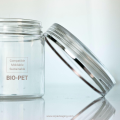







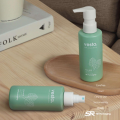

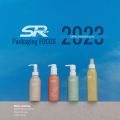

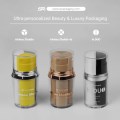
.jpg)
.jpg)


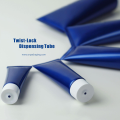
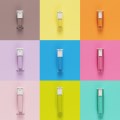

.png)
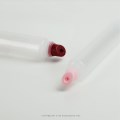

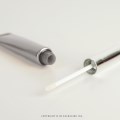
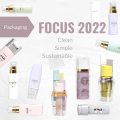

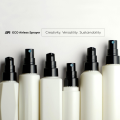



.jpg)








.png)

